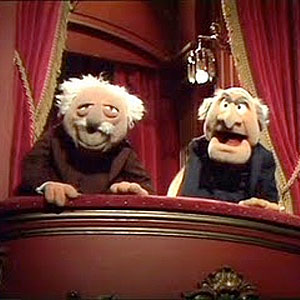
Image Credit:
This semester has been interesting, particularly because I am always comparing my Fall course on revolution to my summer course on the same topic. My perception of my summer class can be boiled down to one line: “if Communists were fighting for equal rights for women, the end of child labor, and against exploitation of the poor, then why is it so bad to call yourself a Communist?” This line (remembered to the best of my ability) came from a summer semester student and showed the open-mindedness and general willingness to see the inequality, poverty, and contradictions in the US and the world. Of course, we discussed after this sentiment how the history of practiced/attempted communism must make one question the theory, but the ability for my summer students to read sympathetically, first trying to understand the argument then offering criticism, has generally set apart my summer students from the fall.
However, the composition of students in my courses between summer and fall have also been staggering. The majority of my summer class was composed of first-generation college students from low-income or rural areas, and only a few students were white. In my fall class, only a few students are not white. Only 3 claim to have come from impoverished families. I am unsure how many are first-generation college students. In addition, the number of students in my class who are libertarian or staunchly conservative is staggering. I often wonder if they misread my class as “Rhetoric of the Ron Paul Revolution.”
It has taken a while for my students to learn to read generously, since, despite my best efforts, finding conservative/counterrevolutionary texts has been difficult. They are either too long to excerpt, too difficult (particularly since many have older language), or merely newspaper editorials, without the same history or rigor as many revolutionary texts. I have stuck to Locke, the Declaration of Independence, the Confederacy secession documents, and the Second Vermont Republic’s manifestos. However, the list of radical or leftist manifestos seems never-ending, and the class definitely skews to that side.
Teaching to a hostile audience has thus been even harder because I know what teaching to a sympathetic one is. However, it has also been helpful. It has helped me realize that many colleges are full of conservative people (just like my undergrad alma mater was), those who fight for the status quo (or “tradition” as it is affectionately called) either actively or through attitudes of apathy, and those who fight for change I don't agree with. But this mirrors the current world we live in. It is more realistic that those of us who want change will be faced with hostility, and it requires me to up my teaching game, which I think I have, as I have gotten more comfortable with my students and experimented with different teaching methods. For example, I just facilitated a student-led discussion of Tavis Smiley and Cornel West’s “The Poverty Manifesto.” Students brought in the questions, and I merely picked some to help them guide their conversations. I was not allowed to respond, and the students had to talk to each other, not me. I will admit, it was incredibly difficult to stay silent, but I heard from students who I had only heard from a few times (if any) this semester.
Another thing I have learned from teaching a class of counterrevolutionaries is that I don’t need to hide my beliefs, bite my tongue, and allow the sanctification of “neutrality” and “objectivity” to be an excuse I hide behind to not speak up to opinions that hurt the classroom dynamic and go against my ethics. After all, my students don’t. I am a person, too, not a teaching robot. This issue is particularly hard for me, having so recently taught in a public high school where you are constantly required to pretend to be neutral and act like you feel passionately about nothing, giving the idea that all ideas are equally valid (when this is clearly not the case). However, as one of my good friends discussed with me when writing this post, public school and university are not the same. Students pay for the privilege of college and the opportunity to hear the thoughts marinated upon by motivated students and scholars, so I don’t need to succumb to “neutrality.”
Of course, I also have to be careful about the power that comes with the title “instructor” and work to show my students that though I have opinions, those opinions will not lead to lower grades for those who don’t hold the same opinions. I think my move to the Learning Record next semester will help this. I would talk more about the scourge of “neutrality” but I think my colleague Meredith’s recent post will suffice.
The last thing I have learned from teaching to a hostile audience is that the strategies we teach in rhetoric matter. It is true what I tell my students: we grow from having our ideas challenged, by defending our ideas, and by having the humility to realize when some of our arguments fall short. As my students begin to compile their manifestos on topics as varied as when/if a country has a responsibility to respond to genocide, fighting rape culture in India, gun rights, and reforming the tax system, I hope that I see their arguments targeted towards convincing a hostile audience. Then they’ll finally know what it’s felt like for me since August 28th.

